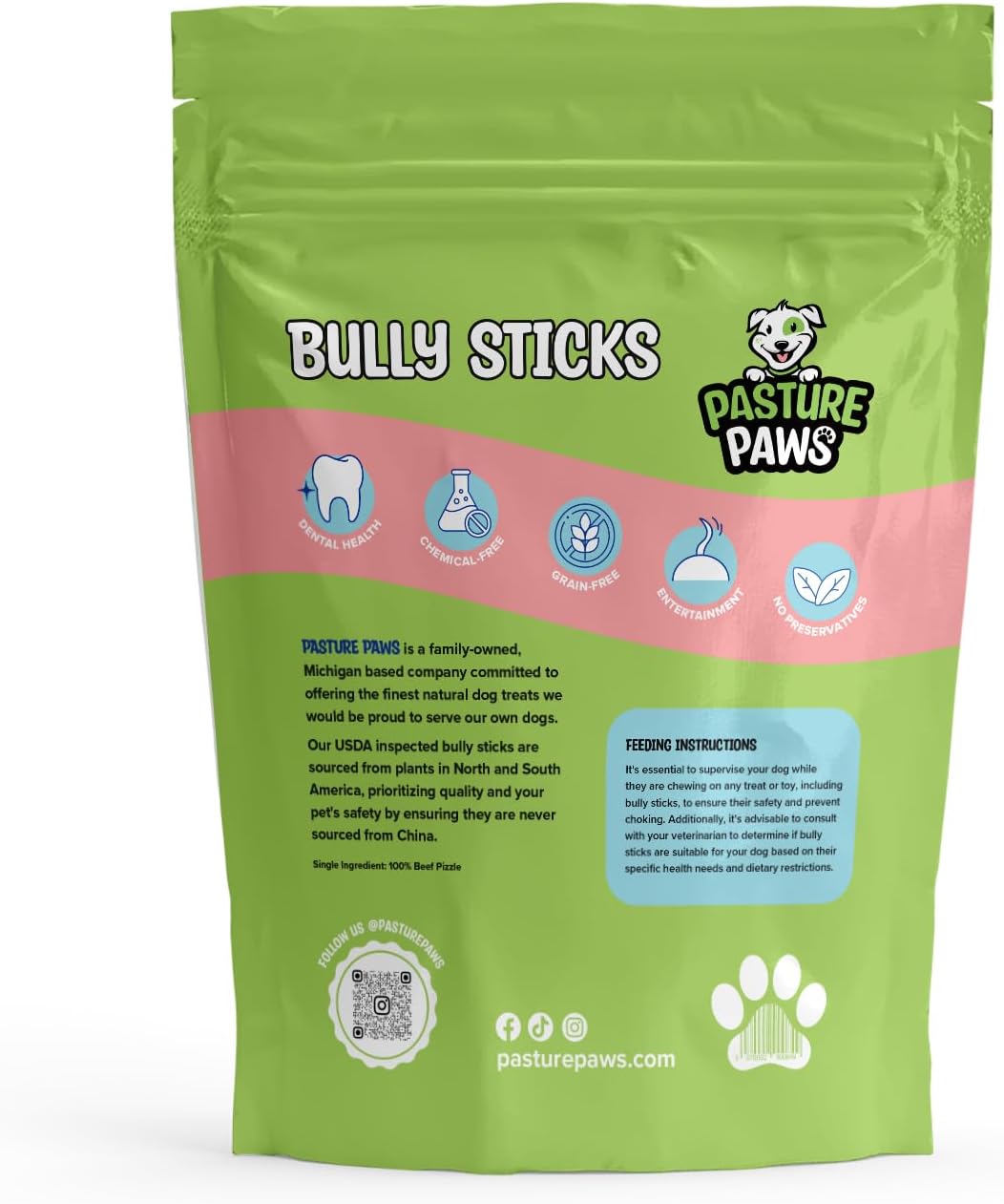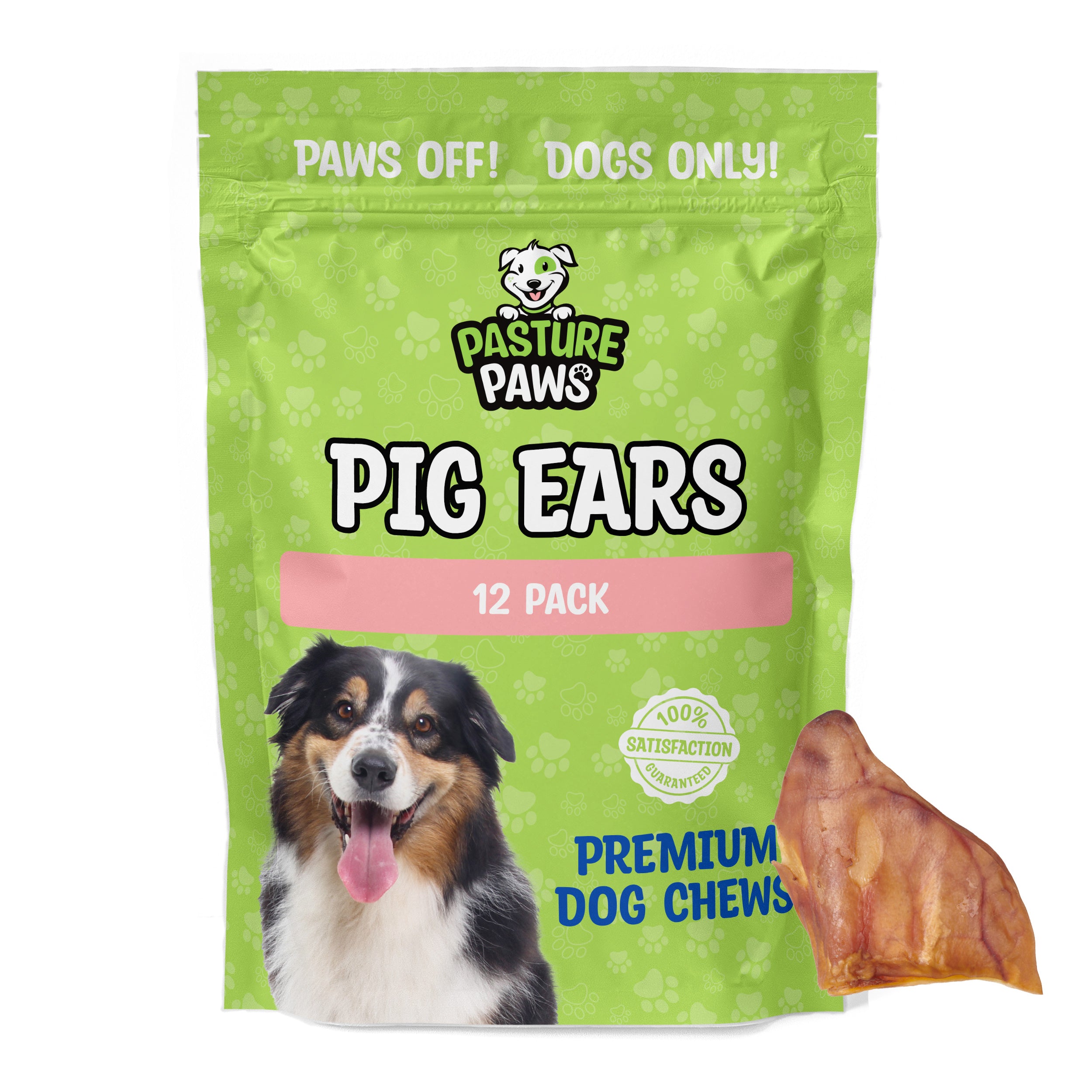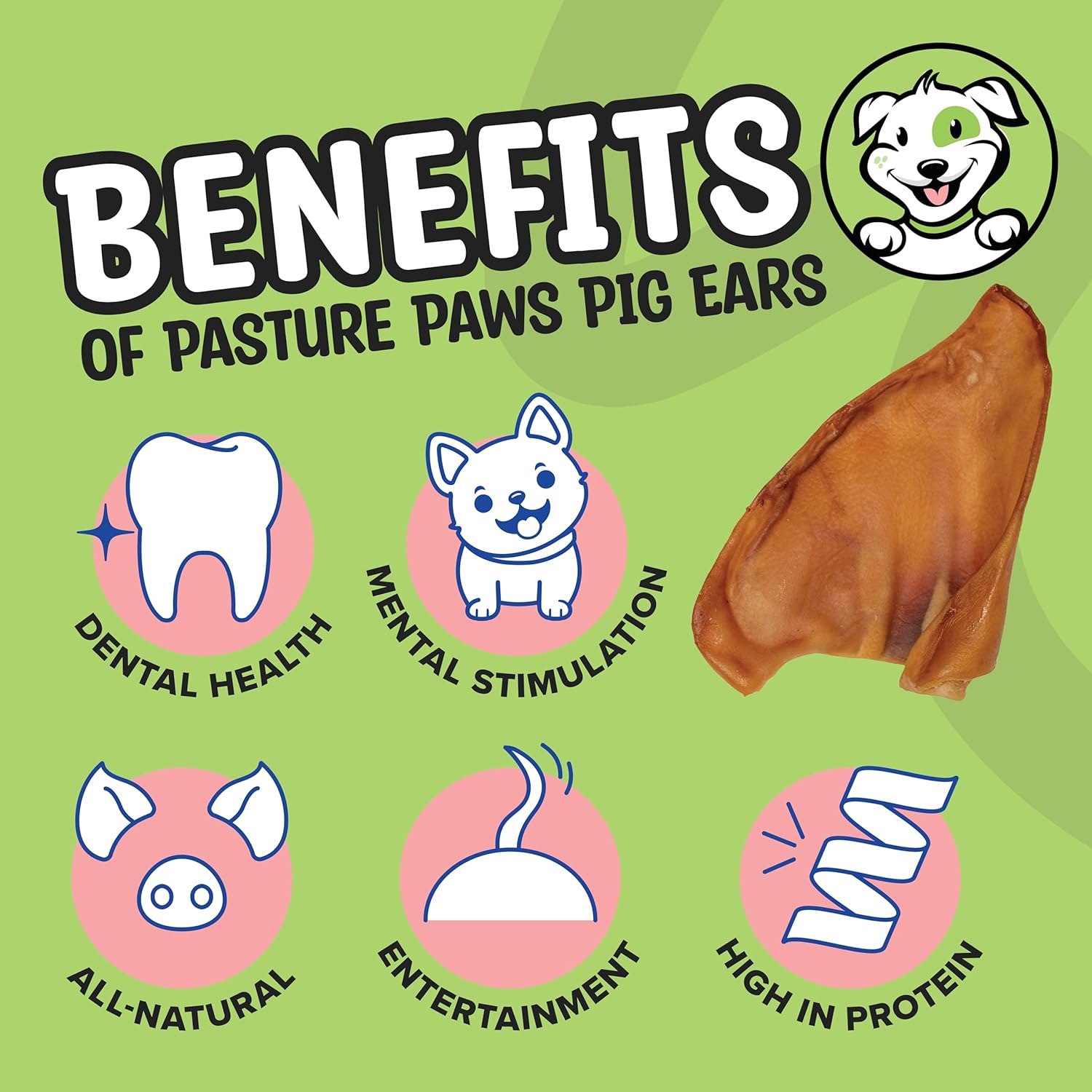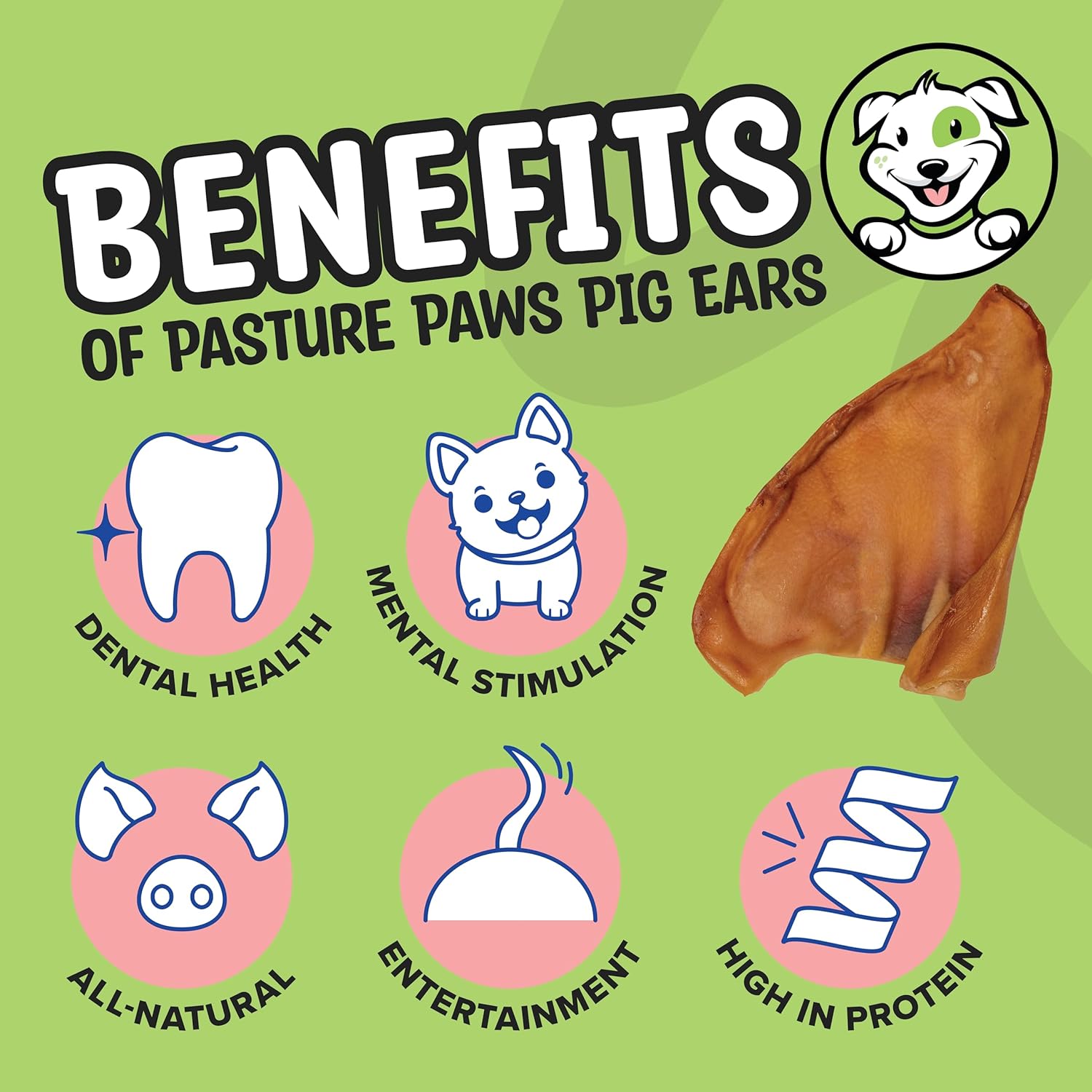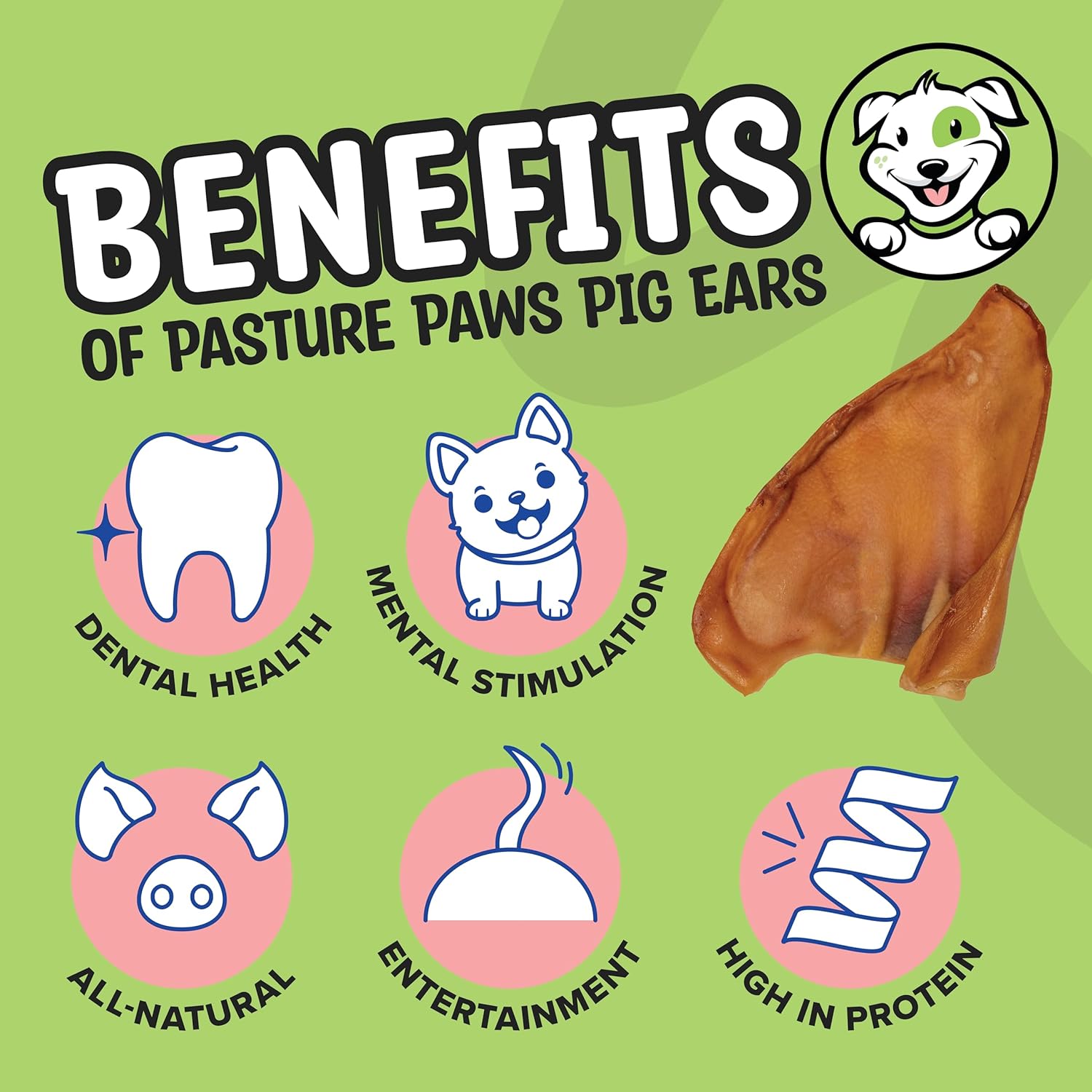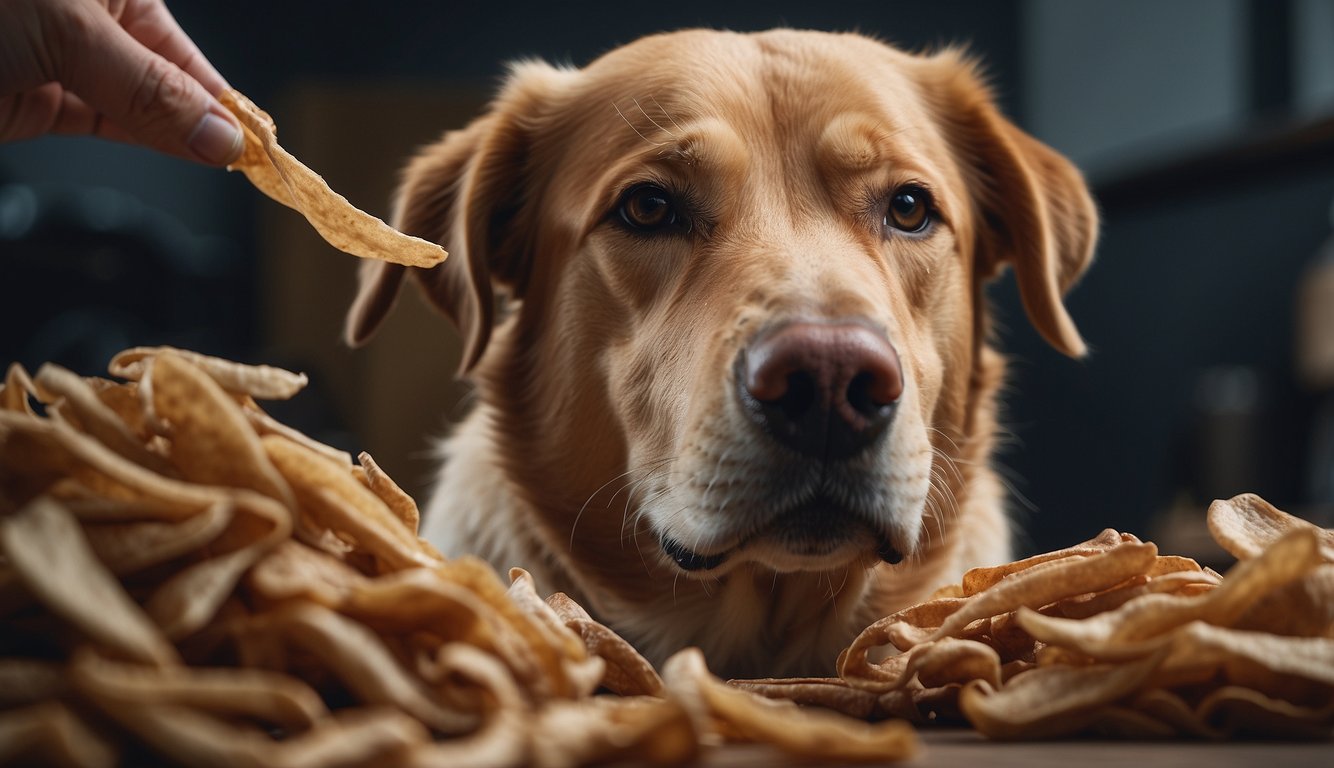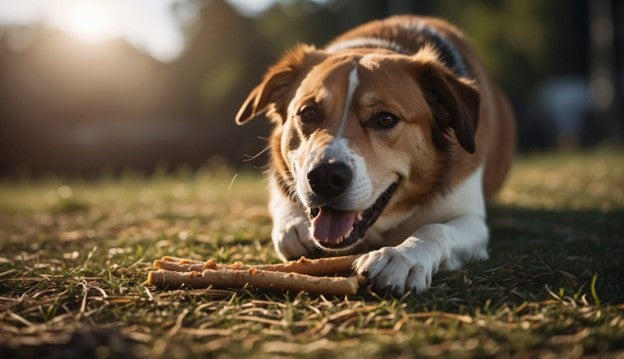Many dog owners wonder, "Are pig ears safe for dogs?" They worry about potential health risks and the overall safety of this popular treat.
Pig ears are generally safe for dogs when sourced from reputable suppliers and given in moderation. They provide a natural, chewy texture that can help with dental health. However, it’s crucial to monitor your dog while they enjoy this treat to prevent choking or digestive issues.
Discover the answers to all your questions about pig ears for dogs in our detailed blog post. For a selection of high-quality pig ears, check out our Pig Ears for Dogs collection. Explore our Pig Ears Dog Treat options, and learn more about Pig Ears Safe for Dogs.
Understanding Pig Ears as Dog Treats
Pig ears are a popular dog treat that is marketed as a natural chew alternative to rawhide and other dog treats. They are made from the ears of pigs and are usually sold as dried, chewy snacks for dogs.
While they are generally considered safe for dogs, there are a few things you should know before feeding them to your furry friend.
Nutritional Profile
Pig ears are a good source of protein and contain essential nutrients such as zinc and iron. However, they are also high in fat and calories, so it's important to feed them to your dog in moderation. According to one study, pig ears contain an average of 130 calories per ear, which is roughly 9% of the daily caloric intake for a 50-pound dog.
Pig Ears Vs. Other Chew Treats
Compared to other chew treats, pig ears are a good option for dogs who have dental issues or are senior. This is because they are primarily made of cartilage, which makes them softer and easier to chew. Rawhide, conversely, can be difficult for some dogs to digest and cause gastrointestinal problems if ingested in large quantities.
When choosing a pig ear treat for your dog, it's important to look for high-quality products that are made from pork raised without antibiotics or added hormones.
Additionally, it's important to monitor your dog while chewing on a pig ear to ensure they don't swallow large pieces or choke on the treat.
Health Benefits and Risks of Pig Ears

If you consider pig ears as a treat for your furry friend, it's important to understand the potential health benefits and risks associated with this popular canine snack. Here are the key things you need to know.
Dental Health Advantages
One of the biggest benefits of pig ears for dogs is their positive impact on dental health. Chewing on pig ears can help remove plaque and tartar buildup from your dog's teeth, promoting good oral hygiene and preventing dental issues such as bad breath and gum disease. Chewing also stimulates saliva production, which can help neutralize harmful bacteria in your dog's mouth.
Potential Health Concerns
While pig ears can offer some benefits, they also come with potential health risks that you should be aware of.
One concern is the high-fat content of pig ears, which can contribute to weight gain and other health issues if your dog consumes too many.
Additionally, pig ears can be contaminated with bacteria such as salmonella, which can cause gastrointestinal upset, vomiting, diarrhea, and other health problems.
Allergic Reactions and Food Sensitivities
Another potential issue with pig ears is the risk of allergic reactions and food sensitivities. Some dogs may be allergic to the proteins found in pig ears, which can cause symptoms such as itching, hives, and swelling.
Additionally, dogs with food sensitivities or digestive issues may experience gastrointestinal upset or other health problems after consuming pig ears.
Pig Ears: Safety and Precautions

Pig ears are a popular treat for dogs, but as with any food, there are safety precautions to consider before feeding them to your furry friend. Here are some important things to keep in mind:
Safe Feeding Practices
Pig ears are considered safe for dogs, but practicing safe feeding habits is important. Always wash your hands before and after handling pig ears, and make sure to store them properly in a cool, dry place.
Supervision and Size Considerations
When it comes to pig ears, size matters. Make sure to choose a pig ear that is appropriate for your dog's size and breed. Smaller dogs and puppies should be given smaller pig ears to prevent choking hazards.
Recognizing and Responding to Complications
While pig ears are generally safe for dogs, there are some risks to be aware of.
Higher fat content in pig ears can lead to gastrointestinal upset, and there is a risk of contamination with harmful bacteria such as Salmonella.
If your dog experiences vomiting, diarrhea, or other symptoms after eating a pig ear, contact your veterinarian immediately for treatment.
Choosing the Right Pig Ears
When it comes to choosing the right pig ears for your furry friend, there are a few things to keep in mind.
Quality and Processing
It's important to select high-quality pig ears that are free from harmful additives and preservatives. Look for products that are made from natural ingredients and avoid those that have been treated with chemicals or other harmful substances.
Additionally, it's important to consider how the pig ears have been processed. Some manufacturers blanch pig ears to remove hair and debris, while others may use other methods.
Be sure to select pig ears that have been processed in a safe and hygienic manner to reduce the risk of bacterial contamination.
Understanding Labels and Origins
When selecting pig ear dog treats, it's important to understand the label and origin of the product. Look for products that are made in the USA or other countries with strict quality control standards to ensure that they are safe for your pet.
It's also important to be aware of any product recalls that may affect the brand of pig ears you are considering.
Stay up-to-date on any recalls and avoid products that have been recalled due to contamination or other safety issues.
Incorporating Pig Ears into a Balanced Diet

When it comes to incorporating pig ears into your dog's diet, it's important to keep in mind moderation and frequency.
Moderation and Frequency
Giving your dog pig ears too often or in large quantities can lead to health issues such as obesity or upset stomach. It is recommended that pig ears should only be given as an occasional treat and not as a regular part of their diet.
Dietary Integration and Alternatives
If you are looking to incorporate pig ears into your dog's diet, it's important to consider their overall dietary needs.
Pig ears should not be used as a substitute for a balanced diet but rather as an occasional addition.
Pig ears are high in protein and contain 9 out of the 10 essential amino acids, making them a good source of nutrition for your dog. However, they are also high in fat, which can be problematic for dogs with certain health conditions or those prone to weight gain.
If your dog is on a low-fat diet, it's important to consider this before giving them pig ears as a treat.
If you are looking for alternative treat options, there are many healthy and low-fat options available, such as carrots, green beans, or small pieces of cooked chicken.
Conclusion
After researching and reviewing various sources, it is clear that pig ears can be a safe and enjoyable treat for dogs when given in moderation and under supervision.
One of the benefits of pig ears is that they are a natural chew that can help promote dental health by reducing plaque and tartar buildup. Additionally, they are a good source of protein and other essential nutrients, making them a healthy option for occasional snacking.
If you're ready to give your dog a nutritious and delicious treat, explore Pasture Paws for a selection of high-quality pig ears. Give your furry friend the best!
Frequently Asked Questions
Can pig ears cause digestive issues in dogs?
Pig ears can cause digestive issues in dogs if they are not properly prepared or if your dog has a sensitive stomach.
Some dogs may experience diarrhea, vomiting, or other digestive problems after eating pig ears. To prevent these issues, make sure to supervise your dog while they are chewing on the pig ear and remove it if they start to swallow large pieces.
What are the benefits of feeding dogs pig ears?
Pig ears can be a good treat for dogs when given in moderation and as part of a balanced diet. They offer benefits like dental cleaning and are a source of 9 out of the 10 essential amino acids, as well as Chondroitin and Glucosamine, which are good for joint health.
However, it is important to note that pig ears should not be the only source of nutrition for your dog and should be given in moderation.
At what age is it appropriate to give puppies pig ears?
It is generally recommended to wait until your puppy is at least six months old before giving them pig ears to chew on.
This is because puppies are still developing their teeth and digestive systems, and pig ears may be too tough or difficult for them to chew.
How often should dogs be given pig ears to chew?
The frequency at which you give your dog pig ears to chew on depends on their individual needs and dietary requirements.
It is generally recommended to give them pig ears as an occasional treat rather than a regular part of their diet. It is also important to monitor your dog while they are chewing on the pig ear to prevent any choking hazards or digestive issues.

